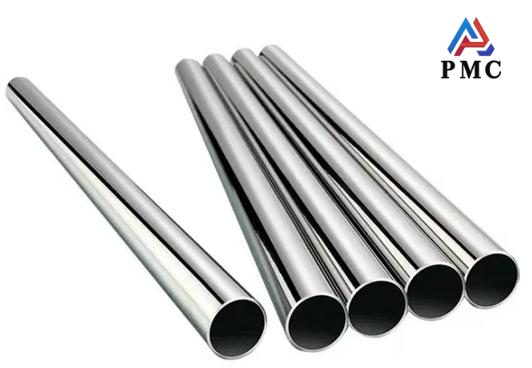
Performance Analysis of 316 Stainless Steel Pipe at High Temperature
As a core material in the industrial field, 316 stainless steel pipe occupies an irreplaceable position in key fields such as chemical industry, pharmaceuticals, and marine engineering due to its excellent high temperature resistance. Its chemical composition strictly follows the ASTM A240 standard, containing 16-18% chromium (Cr), 10-14% nickel (Ni) and 2-3% molybdenum (Mo). This alloy ratio enables it to form a stable passivation film in high temperature environments, while also having excellent corrosion and oxidation resistance.
316 stainless steel pipe's high temperature resistance "ability"
Operating temperature range
The temperature resistance of 316 stainless steel pipe shows significant environmental dependence:
Oxidizing environment: It is recommended that the long-term continuous use temperature should not exceed 800°C, otherwise the oxide film may fail due to continuous oxidation.
Non-oxidizing environment: Under oxygen-free or low-oxygen conditions, it can withstand high temperatures of around 1200°C, and can even reach 1300°C for short-term intermittent use.
Load softening temperature: about 950℃, which is the critical temperature at which the material begins to soften under stress conditions.
Key Performance Indicators
High temperature strength: At room temperature, the tensile strength of 316 stainless steel is ≥620MPa and the yield strength is ≥310MPa. Even at a high temperature of 700°C, its tensile strength can still maintain more than 60% of the value at room temperature, demonstrating excellent structural stability.
Oxidation resistance: The Cr₂O₃ oxide film formed by chromium element has a thickness of about 122±32nm, which can effectively prevent oxygen penetration below 800℃, and the oxidation rate is as low as 0.05mm/year.
Corrosion resistance: The addition of molybdenum increases its pitting potential by 200-300mV in a Cl⁻-containing environment, and the corrosion rate in a 10% H₂SO₄+5% HCl mixed acid is < 0.1mm/year.

The "behind-the-scenes hero" of high temperature resistance: composition and principle
The magic of alloy composition
Chromium (Cr): As the main component of the passivation film, chromium isolates oxygen by forming a dense Cr₂O₃ layer. Its thermodynamic formation energy (ΔG°f=-1128kJ/mol) is much lower than that of iron oxide, ensuring the stability of the oxide film.
Molybdenum (Mo): It significantly improves the material's resistance to pitting and crevice corrosion. Electrochemical tests show that adding 2.5% Mo can increase the pitting potential (E_b) by 200-300mV, especially in chloride-containing media.
Nickel (Ni): It expands the austenite phase region and reduces the martensite transformation temperature (Ms) to below -196°C, ensuring that the material maintains a single austenite structure at high temperatures and avoiding brittle phase transformation.
The influence of microstructure
The austenite grains of 316 stainless steel are refined by dynamic recrystallization at high temperatures, improving the plastic deformation capacity.
Studies have shown that at a load softening temperature of 950°C, the grain size is refined from 30μm at room temperature to 10-15μm, and at the same time, the precipitation of carbides at the grain boundaries is effectively suppressed, maintaining the high temperature strength of the material.
Precautions for using 316 stainless steel pipes
Temperature Limits and Risks
1. Sensitization temperature range: When used continuously at 450-860℃, the precipitation of chromium carbide may lead to chromium depletion at the grain boundary and reduced corrosion resistance. It is recommended to use 316L stainless steel (carbon content ≤ 0.03%) to avoid this risk.
2. Instantaneous high temperature shock: Although it can withstand instantaneous high temperatures of 1300°C, long-term exposure in the range of 800-1575°C should be avoided, otherwise the oxide film may fail due to stress cracking.
Environmental considerations
1. Chloride concentration: In a Cl⁻-containing environment at 60°C, the corrosion resistance limit of 316 stainless steel is about 500 mg/L. Exceeding this value may cause stress corrosion cracking.
2. Reducing atmosphere: In H₂S or strong reducing acid (such as concentrated hydrochloric acid), the passivation film may be destroyed. It is recommended to use high-molybdenum stainless steel (such as 317L) or lining materials.
Conclusion
316 stainless steel pipe exhibits excellent comprehensive performance in high temperature environments due to its unique alloy design and microstructure. Its high temperature resistance comes from the stable oxide film formed by the synergistic effect of chromium and molybdenum, while the addition of nickel ensures high temperature plasticity. In the fields of chemical, pharmaceutical, marine, etc., 316 stainless steel pipes have become the preferred material for high-temperature equipment.
In the future, with the development of emerging fields such as hydrogen energy and deep-sea engineering, higher requirements will be placed on the materials' resistance to high temperatures and extreme corrosion. The high temperature performance of 316 stainless steel is expected to be further improved by optimizing alloy composition (such as adding nitrogen) and surface modification technology (such as sputtering high aluminum alloy coating). At the same time, with the promotion of green manufacturing standards, the development of low-carbon, low-nickel 316 derivative steel grades (such as 316LMod) will become an industry trend to meet the needs of sustainable development. In this continuous breakthrough in material performance, 316 stainless steel pipe will continue to play a key role in pushing industrial technology to the forefront of higher temperatures and more complex environments.
Read more: 316 Stainless Steel Pipe Inner Wall Coating Treatment


